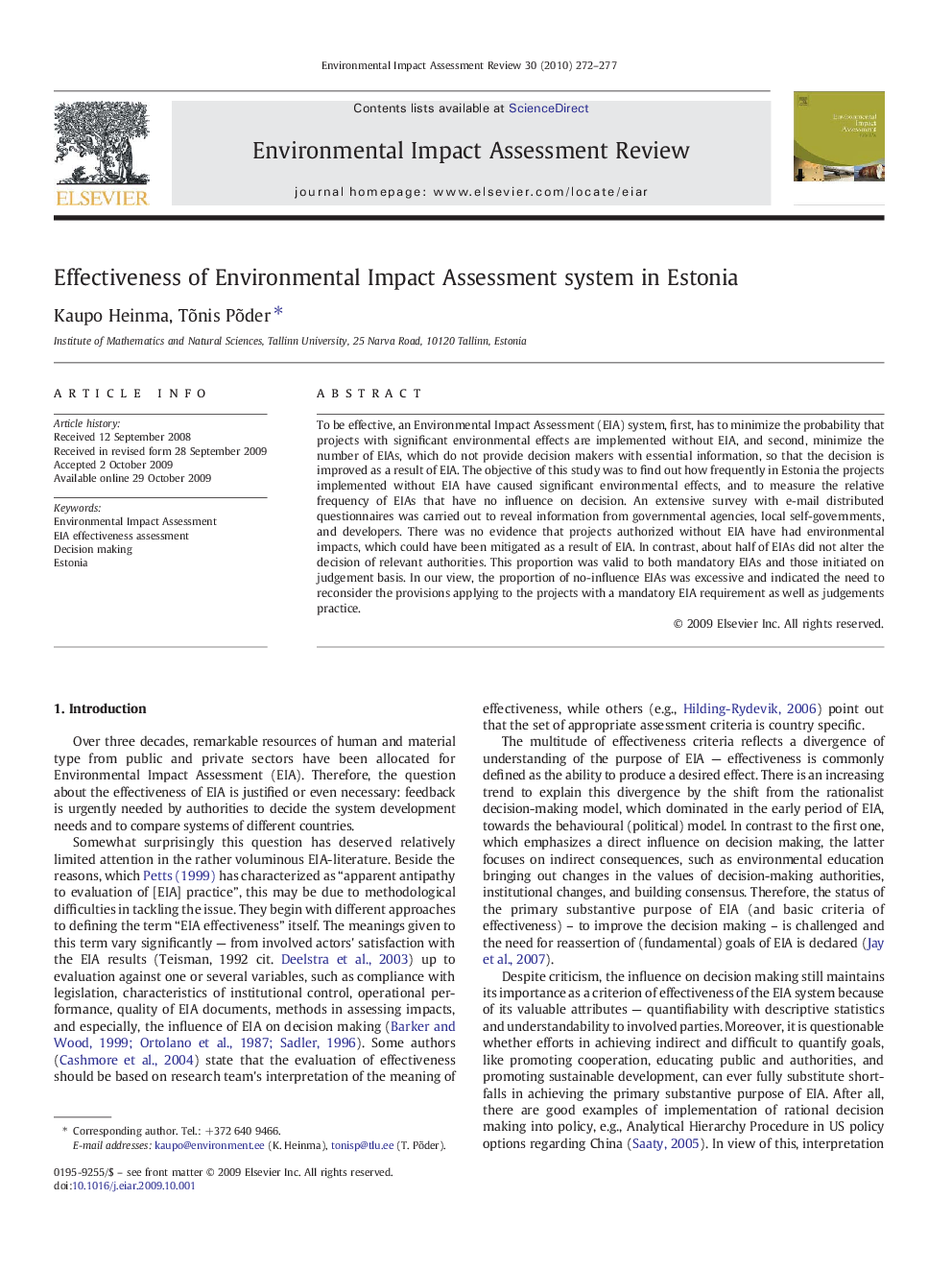| Article ID | Journal | Published Year | Pages | File Type |
|---|---|---|---|---|
| 1053128 | Environmental Impact Assessment Review | 2010 | 6 Pages |
To be effective, an Environmental Impact Assessment (EIA) system, first, has to minimize the probability that projects with significant environmental effects are implemented without EIA, and second, minimize the number of EIAs, which do not provide decision makers with essential information, so that the decision is improved as a result of EIA. The objective of this study was to find out how frequently in Estonia the projects implemented without EIA have caused significant environmental effects, and to measure the relative frequency of EIAs that have no influence on decision. An extensive survey with e-mail distributed questionnaires was carried out to reveal information from governmental agencies, local self-governments, and developers. There was no evidence that projects authorized without EIA have had environmental impacts, which could have been mitigated as a result of EIA. In contrast, about half of EIAs did not alter the decision of relevant authorities. This proportion was valid to both mandatory EIAs and those initiated on judgement basis. In our view, the proportion of no-influence EIAs was excessive and indicated the need to reconsider the provisions applying to the projects with a mandatory EIA requirement as well as judgements practice.
